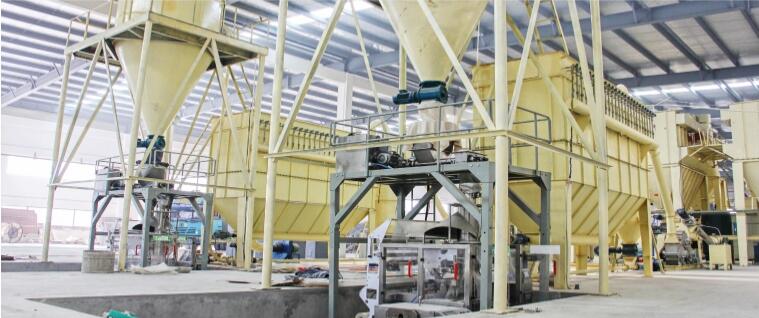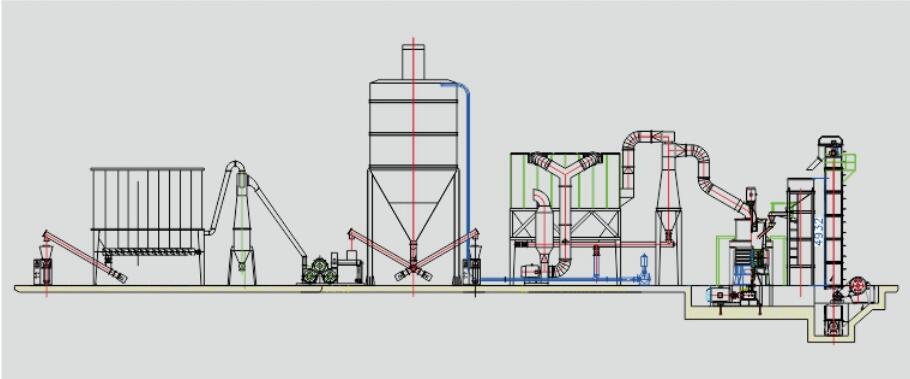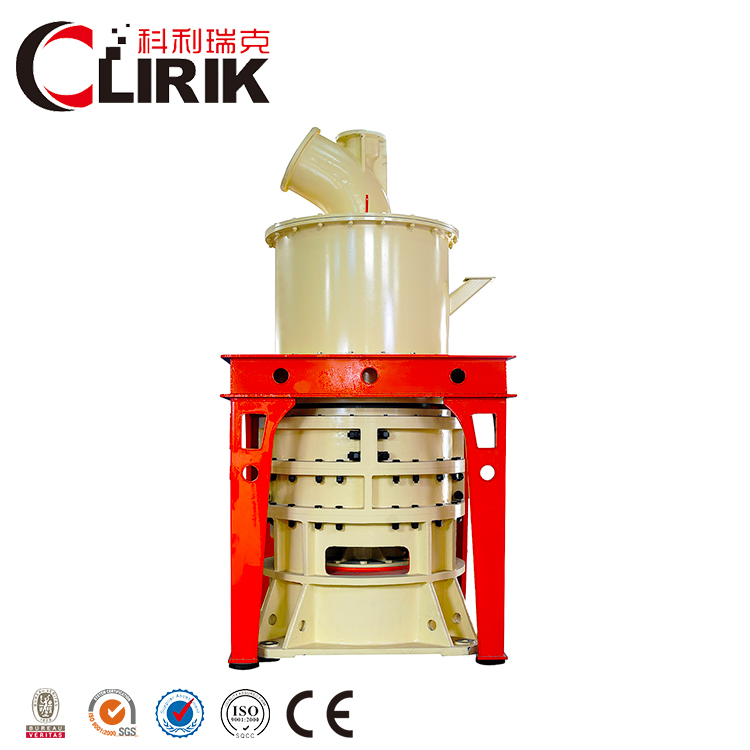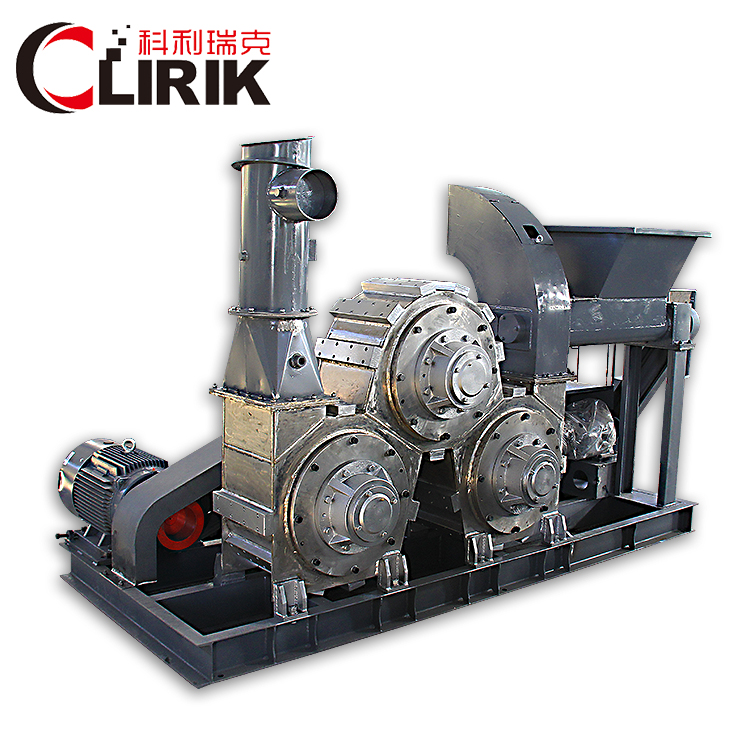News
Barite Powder Grinding And Surface Modification
Date:2021-09-14 10:03:12
Barite is an important barium-containing mineral with the characteristics of high density, stable chemical and thermal properties, and its main industrial applications are the petroleum industry and the chemical industry.
Barite application:
In the petroleum industry, it is mainly used as a weighting agent for oil and natural gas drilling mud;
In the chemical industry, barite is used as a raw material to manufacture various barium-containing chemical products, such as barium carbonate, barium sulfate, barium oxide, and lithopone.
In the paint industry, barite powder filler can increase the thickness, strength and durability of the paint film. Lithopone pigment is also used in the manufacture of white paint, which has more advantages than zinc white and lead white when used indoors. The barite used in the paint industry requires a particle size of 2μm and the whiteness to be greater than 90%;
In the rubber and plastics industry, barite is used as a filler to improve the hardness, wear resistance and aging resistance of rubber and plastics.
However, there are significant differences between inorganic mineral powder materials and organic polymers in chemical structure and physical form, and the surface properties of the two are different, resulting in greater differences in their compatibility and affinity. When barite is used as a filler, it is difficult to uniformly disperse in the organic polymer and affect the mechanical properties of the composite material, and it is difficult to exert the excellent properties of inorganic fillers such as the functionality, surface activity and small size. Therefore, in order to modify the surface of barite powder, a suitable modifier can be selected to act on the surface of barite to improve the physical and mechanical properties of the modified material, so that the barite powder has a wider range of applications. The following is the introduction of barite grinding and modification production line.
Barite powder grinding and modification production line
The barite powder modification production line is a set of equipment that processes barite into ultra-fine barite powder and modifies it.
It is mainly composed of crusher, elevator, ultrafine grinding mill, powder separator, powder collector, modifier, conveyor and packaging machine.

Production Process:
1. The crusher crushes the rough barite into particles smaller than 20 mm,
2. Then the elevator is sent to the superfine mill for grinding,
3. The ground barite powder is sent to the modifying machine for powder surface modification
4. The modified barite powder is sent to the silo by the conveyor
5. Finally, it is packed into bags by the packaging machine.


Barite Grinding Mill-HGM Ultrafine Grinding Mill
Feeding size: less than 20mm
Discharge fineness: 150-3000 mesh
Output: 0.5-45t/h
Machinable materials: barite, calcite, chalk, limestone, dolomite, kaolin, bentonite, talc, mica, magnesite, ilite, pyrophylite and vermiculite, sepiolite, attapulgite, rectorite, diatomite, gypsum, alunite, graphite, fluorite, rock phosphate, Kalium ore, pumice, fly ash, etc.
working principle:
Large pieces of material are crushed to the required size by the jaw crusher.
Crushed material is sent to the storage hopper by elevator.
Vibrating feeder send material to the main grinding chamber evenly and continuously for grinding.
The ground powder is taken away by the airflow of the fan and classified by the analyzer.
The finished product that meets the fineness is collected by the airflow through the pipe, then into the large selection air collecting pipe.
The material is discharged through the powder outlet pipe to become the finished powder.
Parameter:
| Model | HGM80 | HGM80A | HGM90L | HGM100L-Ⅱ | HGM100P | HGM125L | HGM1680L |
|---|---|---|---|---|---|---|---|
| Ring Diameter(mm) | 800 | 800 | 900 | 1000 | 1000 | 1250 | 1680 |
| Ring Number (PCS) | 3 | 3 | 4 | 4 | 4 | 4 | 4 |
| Input Size (mm) | ≤10 | ≤10 | ≤10 | ≤15 | ≤15 | ≤20 | ≤20 |
| Output Size (mesh) | 150-3000 | 150-3000 | 150-3000 | 150-3000 | 150-3000 | 150-3000 | 150-3000 |
| Capacity (t/h) | 0.5-5.5 | 0.5-5.5 | 0.8-6.5 | 1.2-10 | 1.2-11 | 2.5-20 | 5-45 |
| Outlet Size L*W*H (mm) | 8605*4139*6050 | 10454*3393*6626 | 11735*3952*7525 | 14507*3633*7562 | 14362*4200*7562 | 19261*4406*8591 | 25067*5414*9007 |
| Main motor power (kw) | 75 | 75 | 55*2 | 132/75*2 | 132/75*2 | 185 | 315 |
Barite Powder Modification Machine-CLG Powder Surface Coating Machine
Modifiable materials: GCC, PCC, barite, kaolin, talcum, wollastonite, mica, white carbon black, zinc oxide, alumina, silicon powder, graphite, magnesium-hydroxide, barium sulfate, illite and pyrophylite, hexagonite, and etc.
Composition: hopper, feeding device, temperature control dosing system, modifier host, diffusion cyclone dust collector, pulse bag dust collector
Working principle:
The powder surface treatment is mainly completed by means of three modifying rollers. The dry powder and dosed agent are put into the modifying rollers simultaneously. With high speed rotation, the power and agent is running in the form of fluidizing vortex. The modification is going on with the heat generated by high speed shearing, colliding and friction among the rotor, stator and the powder.
Parameter:
| Model | Main Power | Blower Power | Speed of Shaft | Capacity | Weight | Overall Dimension |
|---|---|---|---|---|---|---|
| CLG-200D | 11kw | 2.2kw | 5700 r.p.m | 40-150kg/h | 1t | 3200*600*2200mm |
| CLG-3/300 | 3-18.5kw | 5.5kw | 4500 r.p.m | 500-1800kg/h | 3t | 5800*1800*5600mm |
| CLG-3/600 | 3-37kw | 15-22kw | 2700 r.p.m | 2000-4000kg/h | 10t | 11200*3100*6200mm |
| CLG-3/900 | 3-75kw | 45kw | 2000r.p.m | 4000-7000kg/h | 20t | 21000*3800*6500mm |
Barite surface modification methods
Surface modification of inorganic mineral powders is mainly achieved by adsorption and coating on the surface of mineral powders through chemical modifiers. The surface modification of one or both of the two substances is carried out by some small molecules or polymer compounds with amphoteric groups, lipophilic and hydrophilic groups, and the minerals are made by chemical reaction or physical coating. The surface changes from hydrophilic to hydrophobic, which enhances the compatibility and affinity with organic polymers, and improves the dispersibility, so that the organic and inorganic substances are better combined.
In the surface modification of barite powder, there are widely used surface coating modification, precipitation reaction modification, mechanochemical modification and surface chemical modification. Among them, surface chemical modification is the most widely used and commonly used modification method.
Chemical modifier for barite surface
The surface modifier of the modified powder is also called activator, which can act on the surface of barite. One end of it is bonded to the barite surface through a combination of chemical bond force, polarity and affinity between polarities, etc. The main part is chemical adsorption. The selected modifier should be a class with more than one functional group that can interact with the surface of the mineral powder and more than one group that can bond with the organic polymer base. The activator has a decisive effect on the surface modification of minerals, and it often has its specific application background or application field. Therefore, the selection of surface modifiers must consider the application objects of the processed materials. Since the surface modification of mineral powder involves a wide range of applications, the types of surface modifiers are also diverse. Surface modifiers can be divided into two categories: inorganic modifiers and organic modifiers. Inorganic modifiers mainly refer to some inorganic pigments, which are deposited or coated on the surface of mineral powders through some chemical reactions to form decorative coatings. There are many types of organic surface modifiers, mainly including coupling agents, surfactants, polymers and various resins (see the table below).
| Modifier type | Main species |
|---|---|
| Coupling agent |
Stearic acid coupling agent, silane coupling agent, titanate coupling agent, aluminum titanium composite coupling Agent, aluminate coupling agent, etc. |
| Surfactant | Higher fatty acid, higher fatty acid salt, unsaturated organic acid, etc. |
| Polymers | Polyethylene, polypropylene, polybutene, etc. |
| Resin | Epoxy resins, thermoplastic resins, etc. |
Among the above types of modifiers, coupling agents, surfactants and resin modifiers have all been well applied in the surface modification of barite powder, and they can be well coated on barite powder. The surface of the body forms a firm coating, which has a good affinity with organic paints. It can not only prevent the barite powder from sinking and agglomerate, but also increase (or not affect) the gloss, flexibility and attachment of the paint film. Focus on.
After modification, stearic acid can be evenly coated on the surface of the ultrafine barite powder to form a firm coating, which has a good affinity with organic paint; secondly, the surface tension is significantly reduced, and it is compatible with organic paint It has good compatibility and the hiding power is improved. Adding to paint can increase the thickness, strength and durability of the paint film.
The ultra-fine barite powder surface modified by silane coupling agent is used as the filler of polymer materials. It has good compatibility and affinity with the material, and it is evenly distributed in the matrix to increase the strength and modulus of the filling system. Both have been significantly improved, and the modification effect is good. It is widely used in plastics, rubber, wire and cable, medicine, coatings, paints, daily chemical industries and other industries.
In addition, the modified barite ultrafine powder has good compatibility and affinity with organic polymers, and can be evenly dispersed in the matrix; it can replace expensive precipitated barium sulfate in single-sided coated paper, paint, and paint ,reduce manufacturing cost. The use of other modifiers to modify barite powder still has great prospects, and it is still necessary to use higher technical means and methods to continuously explore and develop.
Product List




